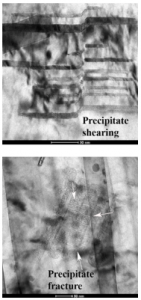![]()
Design of precipitation hardenable magnesium alloys
Global sustainability demands the development of light, strong, and tough metals that can contribute to drastically reduce emissions while facilitating mobility and that can be produced in an economically viable manner. Magnesium, with a density that is two thirds that of aluminum, one fourth that of steel and only slightly higher than that of many polymers, has long been regarded as the ideal substitute for heavier metals, but its comparatively poorer mechanical behavior has limited its application.
The potential of precipitation hardening, through alloying and heat treatment, to improve the strength of Mg alloys and to reduce their mechanical asymmetry has been explored in a relatively high number of recent studies. The results have been somewhat disappointing and it is generally agreed that the strength level that can be achieved via precipitation in most alloys is still considerably lower than that obtained in counterpart aluminium alloys.
IMDEA Materials researchers have recently found out that the reason for such poor precipitation hardening behavior lies in the ability of basal dislocations, the dominant strain carriers in most Mg alloys under a wide range of temperatures and strain rates, to shear or even fracture precipitates, which ultimately constitute very inefficient obstacles to their movement.
This study, which has recently been accepted for publication in the journal Acta Materialia (Cepeda-Jiménez et al. Acta Materialia, 2018, in press), and which was partially funded by the DIMMAT project, provides the following key insights for the design of stronger Mg alloys. First, precipitation of nonshearable particles containing incoherent interfaces is needed, in order to trigger Orowan looping of basal dislocations. The appropriate approach to introduce strong incoherent precipitates into the magnesium matrix is still to be defined. Second, alloying additions that contribute to hinder slip localization are also beneficial, as the interaction of coarse slip bands with precipitates promotes catastrophic fracture of the latter. Finally, alloying additions that can promote the formation of nucleants and, in turn, increase the fraction of precipitates, would also be beneficial.
 Figure. Precipitate sharing (above) and fracture (below) by basal dislocations in a Magnesium alloy. Micrograph obtained by transmission electron microscopy (Cepeda-Jiménez et al. Acta Materialia, 2018, in press).
Figure. Precipitate sharing (above) and fracture (below) by basal dislocations in a Magnesium alloy. Micrograph obtained by transmission electron microscopy (Cepeda-Jiménez et al. Acta Materialia, 2018, in press).
